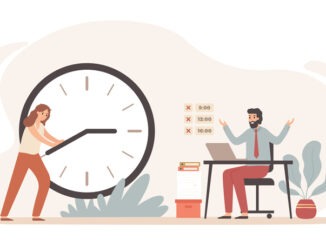
Training is necessary for new employees to start off on the right foot – here’s what should go into your new-hire training plan
CREDIT: This is an edited version of an article that originally appeared on Business News Daily
Growing companies hire new employees who need onboarding, assimilation and training. Ideally, employers recruit new team members with the in-demand skills and talents to perform their duties – an effective training programme will help these promising new employees fully-integrate with the organisation and gives them the tools they need for success and career growth.
A new-hire training plan is a organisation’s well-defined process for onboarding new team members and bringing them up-to-speed. It should do the following:
- Cover administrative concerns – make sure new team members complete any necessary administrative paperwork.
- Introduce new hires to their teams – and share processes for communicating with colleagues and leadership.
- Teach critical tools – train new hires on software and other tools they’ll need to do their jobs effectively.
- Share the organisation vision – introduce new hires to core concepts, like the organisation mission, organisational structure and culture.
Why is new-hire training important?
A comprehensive new-hire training program can help in a number of ways.
- It ensures a strong start: a good training plan can prevent misunderstandings or a sluggish start, helping the organisation reap the benefits of filling a vacant position as soon as a week after the new hire begins in their role.
- It helps employees feel welcome: a comprehensive new-hire training plan helps make new employees feel like members of the team. They’ll meet key organisation members, learn about job perks and identify sources of support within the organisation.
- It makes employees feel confident: training makes new team members feel comfortable in their positions while giving them the knowledge, tools and skills they need to become successful and productive members of your organisation.
- It improves morale and reduces turnover: training can also boost morale because it helps new hires feel like they are welcome and competent members of the team, and high employee morale reduces staff turnover. In contrast, new employees without proper training may get frustrated and leave their jobs soon after getting hired.
These tips can help you develop a training plan for your newbies that will get them settled and ready to produce top-quality work quickly.
Ask existing employees what you should include in the training.
The best way to develop a new-hire training plan is by consulting with current employees who excel in their roles. For the best results, follow these steps:
- Identify key employees: pinpoint excellent employees who are currently in similar positions as the new hire.
- Find out what the job really entails: ask your current employees what they think the new team member needs to perform their daily tasks. This advice can help you avoid overlooking critical job details, and make sure you include the tools and set-up that the new employee will need to succeed.
- Have them evaluate the training: your seasoned employees can help you identify gaps in your current training plan that they experienced first-hand. Ask them what they wish they knew on day one that would have made it easier to begin working.
“Setting up a new-hire training programme can be daunting,” says Matthew Dailly, MD at Tiger Financial. “You need to think about the most important aspects of the job but also the smallest details that they will need to learn to get right. The best way of knowing what new staff need to do is to ask your existing workers. They will make sure you know about everything that goes on in the role and how to set new people up for it.”
Make training flexible, task-oriented and ongoing
Create a dynamic process with the following features:
- customised training for each employee;
- incorporate task-oriented training;
- make training an ongoing process.
Encourage team-level training
Most companies hire for a cultural fit to ensure new employees align with the organisation’s mission and vision; however, all too often, training covers only basic expectations and administrative information, like compensation and employee benefits. Incorporating team-based training can help new employees get up to speed more quickly and assimilate into the organisation culture better than they would with corporate-level training alone.
Team-level training can help new staff to:
- understand their team’s unique workflow;
- recognise the team’s reporting hierarchy;
- appreciate the day-to-day expectations for their role;
- understand existing processes;
- meet other team members;
- learn the metrics used to track the team’s productivity.
Promote good leaders and involve them in the training process.
Without good leaders your staff will have a hard time succeeding; this is especially true for new hires. When promoting or hiring for managerial positions, carefully consider which candidates could best guide and coach other employees and then, involve them in developing and executing your new-hire training plan.


Be the first to comment